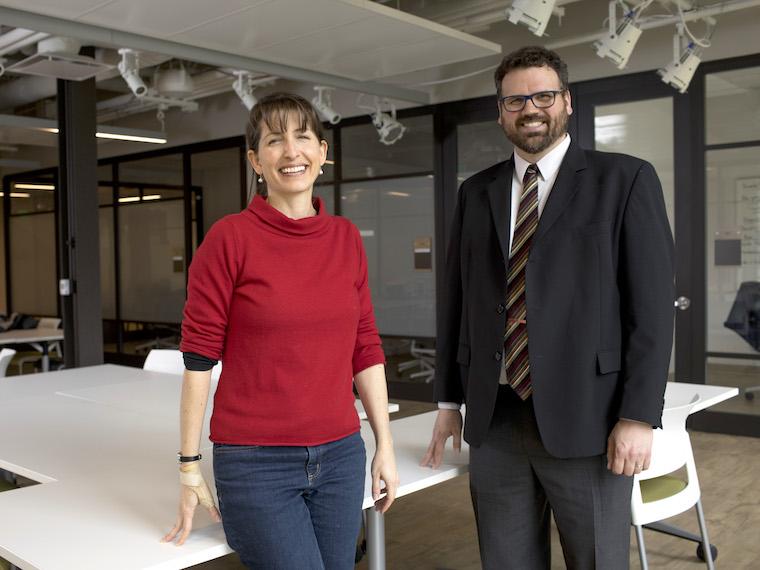Oberlin Center for Convergence (StudiOC)
Arts of Desire
How does desire work? What do human beings want? We often look to the arts for answers.

Course instructors for this learning community are Jennifer Bryan and Charles McGuire.
Photo credit: Jennifer Manna
Arts of Desire
Offered spring 2019
Music and literature, in particular, have long been key sites for exploring the human experience of passionate longing. But the relationships between art and desire are complex. How, for example, does desire affect modes of seeing, thinking, and experiencing? How might it affect the listener’s interpretation of a piece of music? Conversely, how does a particular artistic form affect the kinds of desires that it produces? Are the voices of desire we find in literature and music comparable, or completely different? Can we describe them in the same language, or do they require separate paradigms?
This is an ideal learning community for students who enjoy music and literature but rarely get the chance to think about them in concert. Students in the cluster will gain analytic tools for approaching both, and for thinking more creatively about the arts in general.
They will have the opportunity to explore a broad array of genres and forms, including poems, novels, plays, operas, films, and popular music. And they will take a variety of approaches to the material, considering art as produced, performed, experienced, and interpreted.
Both ENGL 213 and MHST 260 required for enrollment in this learning community.
Instructors
Course instructors for this learning community are Associate Professor of English Jennifer Bryan and Associate Professor of Music History Charles McGuire.
Jennifer Bryan, instructor
ENGL 213 Desire and Literature: Language, Passion, and the Self
Meets 9 am,Monday, Wednesday, and Friday; 4 credit hours; enrollment 20
Required as part of the Arts of Desire StudiOC learning community
Erotic desire is one of literature’s great and perennial themes. This course will explore some of its permutations in texts from the classical to the contemporary: from Ovid to Junot Díaz, from Shakespeare to Zora Neale Hurston, from vampires to Marilyn Monroe.
We will pay special attention to the role of desire in self-construction. How are selves imagined in relation to loss, absence, and otherness? How do our articulations of desire locate us in time, space, genders, bodies, and communities? What do the literatures of desire tell us about who we are and who we want to be?
Charles McGuire, instructor
MHST 260 Desire and the Diva
Meets 3 pm, Tuesday and Thursday; 4 credit hours; enrollment 20
Required as part of the Arts of Desire StudiOC learning community
How is desire musically performed? This course investigates divas—objects, generators, and personifications of musical desire—as performers, cultural products, and artists. We will examine the rise of the diva from the 18th century through the present through operas, films, and popular music.
Investigating how the diva inhabits desire will allow us to discuss interdisciplinary issues including sexuality, gender, exoticism, and colonialism within dramatic forms.
Of particular interest will be the intersection of the diva with performativity, including how divas use desire to create and or radically reinterpret how a creator envisioned a character through the force of their own personality.